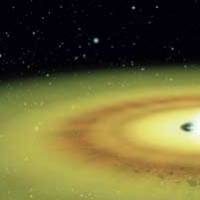Researchers said Friday that space dust particles surrounding a young star in the Painter's Easel constellation have grown to about 10 times the size of regular space dust particles, giving an important clue to the origin of planets.
The researchers, from the National Astronomical Observatory of Japan, Nagoya University and Hokkaido University, observed Beta Pictoris, a star thought to resemble the young sun.
"Planets are believed to have been formed from dust disks near stars. The findings give an important clue as to how planets in the solar system have formed," said Motohide Tamura, a group member and assistant professor at the national observatory.
The group used the observatory's Subaru telescope in Hawaii to study the star, believed to have come into existence about 20 million years ago.
The group analyzed in detail infrared rays emanating from the dust disk surrounding the star.
The analysis showed that each dust particle measures about several micrometers, about 10 times bigger than a typical space dust particle. One micrometer is a thousandth of a millimeter.
The group also said the particles' surface is covered with ice, indicating the particles have grown with ice. The ice could also be a source of water for a planet, it said.
Also, the group said there are several dense areas with small celestial bodies, or planetesimals, in a dust disk within 7.5 billion to 19.5 billion km of Beta Pictoris.


















With your current subscription plan you can comment on stories. However, before writing your first comment, please create a display name in the Profile section of your subscriber account page.